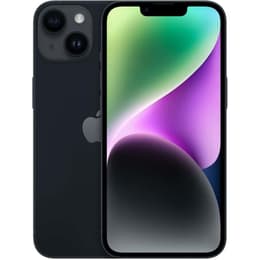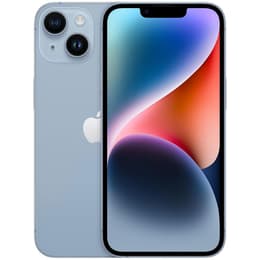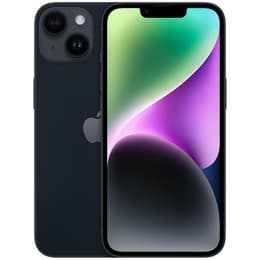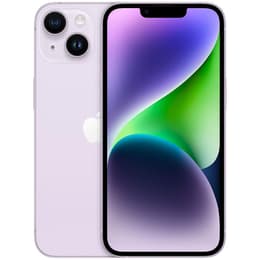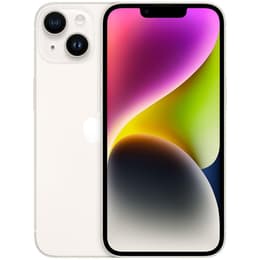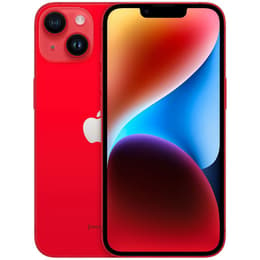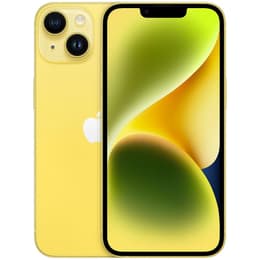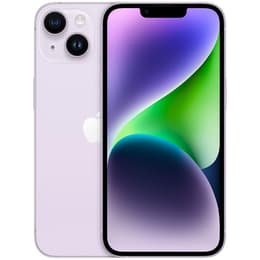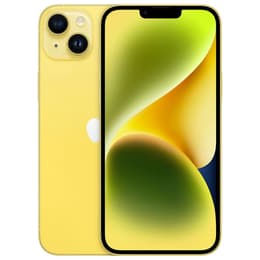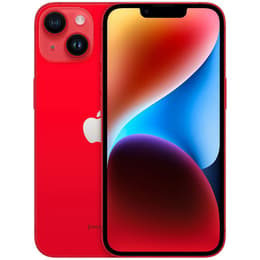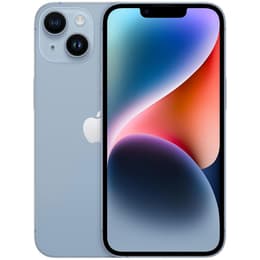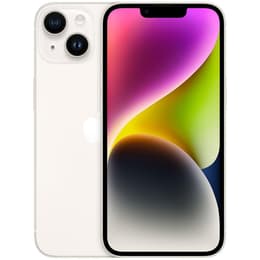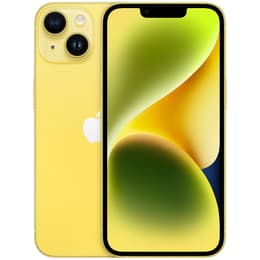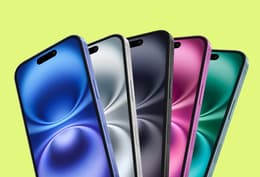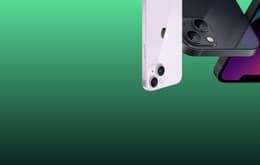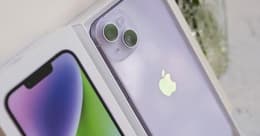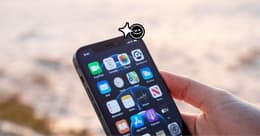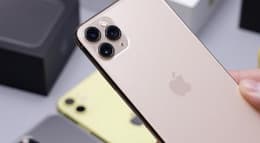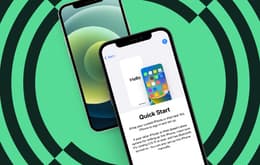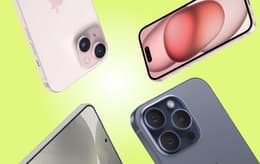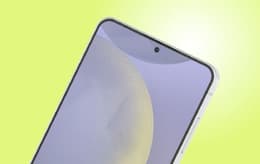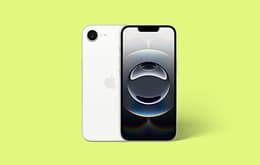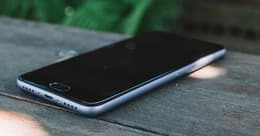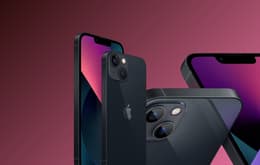
The iPhone 14 was a solid device when Apple released it in 2022, but is it still a smart buy in 2025? With the iPhone 15 dominating the spotlight and the iPhone 16's recent release, let’s take a closer look at whether the iPhone 14 still holds its value or if it’s worth waiting for prices to drop further.
BOTTOM LINE
💗💗💗🤍🤍 3/5: Good
The iPhone 14 faces scrutiny for being only a slight upgrade from the iPhone 13. However, the camera capabilities has been a worthy highlight that showed noticeable improvement. For those loyal to the Apple ecosystem and upgrading from an older iPhone, it is perhaps best to opt for the iPhone 14 Pro for its multiple enhanced features, rather than a couple of enhancements with the entry level iPhone 14.
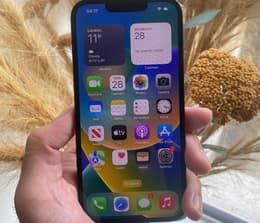
iPhone 14 Pros & Cons
Pros | Cons |
|---|---|
✅ Excellent camera | ❌ Same design as iPhone 13 |
✅ A15 bionic chip | ❌ Same display as iPhone 13 |
✅ Reduced wind noise on calls | ❌ Slow battery charging rate |
One of Apple's newest flagship phones
Released in September 2022, the Apple iPhone 14 hit shelves a year after the release of the previous Apple iPhone 13 models. After hearing a lot of hype, we were eager to check it out for ourselves. We were especially curious about the difference between iPhone 13 and 14, and to see if it’d also compare to other phones in the market, particularly with the solid reception of the Nothing Phone received in the same year. Now, we return to the iconic smartphone to see how it stacks up after its release 3 years ago.
Well, let’s dive right into it. Read on to find out more about what we think about the Apple iPhone 14.
How does the iPhone 14 stack up against the iPhone 15?
The iPhone 14 compared to the 13 was essentially a refined version of its predecessor, with modest improvements, particularly in the camera department. But when we compare it to the iPhone 15, the differences start to become more apparent.
Price:
Let’s start with something unexpected: the iPhone 14 was actually more expensive at launch than the iPhone 15. Brand new, the iPhone 14 launched in Australia from AU$1,399, while the iPhone 15 started at AU$1,249, making it AU$150 cheaper.
Alternatively, if you choose to buy refurbished from Back Market, you’ll save even more. As of the date of this post, the iPhone 14 is available from AU$599, and the iPhone 15 starts around AU$1,077.
Prices based on listings available at the time of publication.
Design & display:
The iPhone 14 retains the classic Apple design, with its 6.1-inch Super Retina XDR OLED display and a Ceramic Shield front. It’s still a visually appealing device, but the iPhone 15 steps things up with slightly thinner bezels, a new Dynamic Island, and a USB-C port replacing the Lightning connector. These updates, while incremental, give the iPhone 15 a more modern feel, especially when considering future compatibility with accessories.
Performance:
The iPhone 14’s A15 Bionic chip, inherited from the iPhone 13 Pro, offers solid performance that remains competitive even in 2024. However, the A16 Bionic chip in the iPhone 15 provides a noticeable speed boost, particularly in graphics-heavy applications and multitasking. For most users, the increase in performance speed isn't going to make any difference, but if you have a need for faster processing, the iPhone 15 is a clear winner.
Camera:
The camera system is where the iPhone 14 still shines. With its improved low-light performance and the introduction of the Photonic Engine, it captures stunning photos and videos. The iPhone 15, however, introduces a more advanced 48MP main camera (previously seen in the iPhone 14 Pro), offering greater detail and flexibility, especially with its ability to shoot in ProRAW. If photography is a key consideration, the iPhone 15 offers more, but the iPhone 14 is still more than capable for everyday use.
Battery Life & Charging:
While the iPhone 14’s battery life was a slight improvement over the iPhone 13, it lags behind the iPhone 15. The iPhone 15 offers better battery efficiency thanks to the A16 chip and comes with slightly faster charging capabilities. If you’re someone who’s constantly on the go, the iPhone 15 might offer the longevity you need.
iPhone 14 specifications
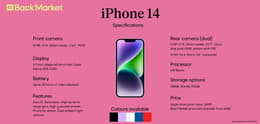
Let's start with a quick overview of the iPhone 14 technical specifications. Overall, the iconic smartphone offers much the same in terms of internals as its predecessor, the iPhone 13. The two generations use the same core processor (the A15 Bionic chip) and offer the same storage options (128 GB, 256 GB, and 512 GB), with the iPhone 14 providing more RAM (6 GB versus 4 GB in the 13), similar battery (the iPhone 14 plays 1 hour longer), and so on.
It’s pretty much the same with the body of these two phones. The camera is somewhat better on the iPhone 14 (due mainly to internals and software; the hardware is identical). The display, too, is the same on both phones. It only gets an upgrade (a small one) on the iPhone 15. All three phones feature the same Ceramic Shield front and glass back.
Here are the iPhone 14 technical specs in more detail:
iPhone 14 (base model) | Specs |
|---|---|
Body Dimensions | 146.7 x 71.5 x 7.8 mm |
Weight | 172g |
Build | Glass-front and glass-back, aluminium frame |
IP Rating | IP68 dust/water resistant |
SIM | Nano-SIM and eSIM - International |
Colours | Midnight, Purple, Starlight, Blue, Red |
Display | 6.1-inch (diagonal) all-screen Super Retina XDR OLED |
Resolution | 1170 x 2532 pixels, 19.5:9 ratio (~460 ppi density) |
Brightness | 1,200-nits |
Protection | Ceramic Shield glass |
Performance Processor | A15 Bionic |
GPU | Apple-designed 5-core |
CPU | 6-core CPU |
RAM | 6GB |
Storage | 128GB, 256GB, 512GB |
Camera | Dual camera: 2 MP, f/1.5, 26mm (wide), 1/1.7", 1.9µm, dual pixel PDAF, sensor-shift OIS 12 MP, f/2.4, 13mm, 120˚ (ultrawide) |
Camera Features | Dual-LED dual-tone flash, HDR (photo/panorama) |
Video | Dolby Vision HDR up to 4K at 60fps |
Selfie Camera | 12 MP, f/1.9, 23mm (wide), 1/3.6", PDAF SL 3D, (depth/biometrics sensor) |
Selfie Camera Features | HDR, Cinematic mode (4K@30fps) |
Selfie Video | 4K at 24/25/30/60fps, 1080p at 25/30/60/120fps, gyro-EIS |
Battery Life | Up to 20 hours of video playback |
Battery Capacity | Li-Ion 3279 mAh, non-removable (12.68 Wh) |
Model Features | Face ID, Barometer, High dynamic range gyro, High-g accelerometer, Proximity sensor, Dual ambient light sensors |
Sound | Stereo speakers with no headphones jack |
iPhone 14 Design
When it comes to appearance, too, there really aren’t that many big differences at all. The only slight physical change would be how the camera for the iPhone 14 protrudes more, but even this change is so slight that it’s hardly noticeable. It’s not even significantly different from the iPhone 15–all three phones have the same basic shape and look, with the iPhone 15 being ever so slightly taller (by maybe 0.9 mm) and wider (by 0.1 mm).
The Apple iPhone 14 weighs 172g, making it just a smidge lighter than the Apple iPhone 13 (173g) and a smidge heavier than the iPhone 15 (which weighs in at 171g). To be fair, these hair-thin differences are hardly noticeable. Regardless, the 14 fits nicely in the pocket if you’re into smaller phones.
The measurements for the iPhone 14 are 146.7 mm x 71.5 mm x 7.80 mm x 172 grams whereas the measurements for the iPhone 13 are 146.7 mm x 71.5 mm x 7.65 mm x 173 grams, and the iPhone 15 comes in at 147.6 mm x 71.6 mm x 7.80 mm x 171 grams. So you likely won't notice a difference in size between the two on a day to day basis. All three generations fit in the hand well (compared to larger phones like the Redmi Note 8 and 9, which are a little large to easily use one-handed for the average person). And they are light enough and thin enough to feel like less of a burden in the pocket.
The colours for the iPhone 14 are also lighter in comparison to the deeper tones of the 13 models. The iPhone 14 colour lineup is mostly noticeably lighter than that of the 13, save for bright red, yellow, and the midnight blue-black. The iPhone 15 continues this trend, featuring largely pastel variations of colours from the two previous generations, including a pink that is almost identical to that of the 13; a light green; a very light blue; and a black that is more akin to charcoal or graphite. If you’re into bold, bright colours, your best options are with the iPhone 14’s yellow and red.
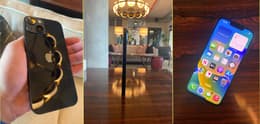
Display / Screen
Apple hasn’t changed the screens much over the past three generations. The iPhone 13, 14, and 15 all have a 6.1-inch Super Retina XDR display. The 13 and 14 are identical, and the 15 has a small cosmetic difference and is a teensy bit bigger. The 15 is also brighter, but all three are very clear, even in daylight.
At 2532-by-1170 pixels and 460 PPI (not to mention 800 nits max/1,200 nits peak brightness), the iPhone 14’s screen is clear, crisp, and bright, even in broad daylight. Still, if you want something better, the iPhone 14 Pro is an option, as is the iPhone 15, which has 2556-by-1179 resolution and 1000 nits max brightness.
Like its predecessor and its successor, the iPhone 14 features a Ceramic Shield front, meaning that it’s less prone to damage. However, the back of all of these phones is still a glass back to accommodate MagSafe charging. So it’s still vulnerable to breaking if you drop it by mistake. We highly recommend getting a proper phone case to prevent any damage in the event that you drop it by mistake.
The iPhone 14 also comes with an IP68 classification, which means it’s resistant to dust, dirt and liquids. You can breathe a little easier when it comes to water damage from accidental spills that are bound to happen from time to time. Just don’t dunk it in the bath.
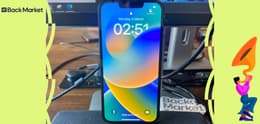
Performance
Similar to the 13, the iPhone 14 is powered by an A15 Bionic chip. This gives it a 5-core GPU that works great for an improved gaming experience. The iPhone 14 sports a higher frame rate score than the iPhone 13 (69 fps vs 60fps) but the performance really isn’t groundbreaking enough to warrant getting a new phone if you already own an iPhone 13. If groundbreaking (and blazing fast) is what you’re after, it’s best to spring for the iPhone 15, with its 4nm-designed A16 Bionic chip–but it comes with the high cost of the newest iPhone generation. Not to fear, though–while the iPhone 14 isn’t as novel in this regard, it still delivers excellent performance!
The iPhone 14 has a 3279 mAh battery pack that supports up to 20 hours of video playback, an hour more than the iPhone 13, and the same as the iPhone 15. Personally, we felt that the test on its battery life was disappointing compared to other phones in the market. The iPhone 14 charges at a rate of 20W, which isn’t as fast as some of its Android competitors, such as the Redmi Note 12 Explorer (210W) or the Samsung Galaxy S22 (25W). Also, an hour more of battery life compared to the iPhone 13 won't make a difference to most users and certainly does not justify the price gap.
There are two speakers on the phone, with one top-front firing and one side-bottom firing. The speakers on the iPhone 14 support spatial audio, which guarantees impressive sound with good performance overall. The wind noise reduction on the iPhone 14 is also surprisingly better than the more advanced iPhone 14 models in the lineup. However, wired headphone fans should note that there’s no 3.5mm headphone jack here–an annoyance that existed previously in the iPhone 13 and remains true with the iPhone 15.
Like the iPhone 13 and 15, the iPhone 14 now runs on iOS 17 (it and the 13 previously ran on iOS 16), which means access to new lock screen customizations that can be synced to different Focus modes. There’s also the ability to edit and undo messages. Additionally, we found the new My Sports feature under the News app to be a fun addition, although we understand that it's not for everyone. Sports fans will appreciate it, though, because they can set up the teams they root for and have real-time info on scores, game times, video highlights and more at the tip of their fingers.
If you’re a fitness fan, we’re also happy to say that the updated Fitness app that comes with iOS 17 is a pleasure to use. You can set up your movement goals and close various rings like you normally would with the Apple Watch. You can also add the Fitness widget to your home screen to be on top of your fitness journey at all times.
Camera specs / review
Truth be told, the camera on the iPhone 14 is the biggest upgrade from the iPhone 13. The iPhone 14 has two cameras on its back and these come with a faster aperture at ƒ/1.5 as well as a large sensor to improve shooting pictures, especially in low light conditions. There’s a realistic bokeh effect when portrait mode is used and good exposure with beautiful colours. It’s definitely a reliable camera to whip out on the go. Using the telezoom at close range showed significant improvements from the iPhone 13, which we're happy about.
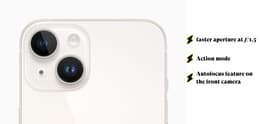
The Photonic Engine system helps get more detail out of photos. To add to that, the Action Mode is great for stabilising when recording videos. There’s smooth video autofocus with quick convergence. If you’re a budding content creator, this type of feature will certainly be helpful in the long run. The selfie camera for the iPhone 14 isn’t to be forgotten, either. With an upgraded lens that comes with a brighter ƒ/1.9 aperture as well as an autofocus feature, it’s now easier to achieve less grainy selfies in general.
These camera improvements may not hold a candle to those on the iPhone 15, with its 48 MP main camera, among other bonuses. But you’ll still be taking very high-quality photos and videos with the iPhone 14.

Alternative options to the iPhone 14
Today, the smartphone market offers plenty of alternatives to the iPhone 14, especially as prices fluctuate.
iPhone 13 Pro: If you’re looking for a more premium experience at a lower cost, the iPhone 13 Pro is a strong contender. It offers a ProMotion display, superior camera capabilities, and better build quality compared to the iPhone 14, making it a better option for most average iPhone users.
iPhone 15: If you’re willing to spend a bit more, the iPhone 15 offers more future-proofing with its updated design, improved performance, and better camera system. Some people may find it well worth it at a similar price point as the 14.
Refurbished iPhone 14 Pro: The iPhone 14 Pro is a more similar smartphone to the iPhone 15, but for a slightly lower average cost. For those who prioritize camera quality and a smoother display, a refurbished iPhone 14 Pro could be a great middle ground.
Android smartphones: If you’re open to switching ecosystems, there are numerous Android devices that offer excellent value in 2025. Samsung’s Galaxy S23 and Google’s Pixel 7 series, for example, are strong contenders with top-tier specs and competitive pricing.
Repairability and Sustainability
The Right to Repair has been on centre stage in recent years, and justly so. Electronics are both expensive and increasingly important in our day-to-day lives, and the realities of planned obsolescence and deliberately unrepairable design mean that we produce a stunning amount of e-waste AND we pay a high financial cost to replace devices that should be fixable. And Apple is supposedly a supporter of customers’ right to repair their devices.
To that end, Apple made the iPhone 14 much easier to repair than its previous generation, at least in the mechanical sense. But the tech giant also used a software limiting technique called parts pairing to keep just anyone from repairing their iPhone without a genuine (and costlier) Apple part AND without informing Apple first. (Read about it on iFixit.) So for the time being, no recent iPhone - not the 13, not the 14, and not the 15 - is easy to repair, unless you are a specially certified repair shop. Which means customers are more likely to get rid of an older phone and buy a new one, creating more e-waste.
One solution that can help you save more while essentially reusing phones that would otherwise have been trashed is to buy a refurbished iPhone from a reputable supplier like Back Market.
Though the products on BackMarket.co.uk and similar sites are used or otherwise pre-owned, they have been professionally repaired, cleaned and tested, and work just as well as new ones, with no compromise on performance. Whether they are unused customer returns, defective products returned under warranty, display items, demonstration products, or goods returned because they or their packaging were damaged in shipping--they don’t go up for sale until we have ensured that they work like new.
What’s more, with Back Market, you'll also get free standard shipping, a 1-year warranty and 30 days to change your mind with every purchase, so there's little risk when compared to buying new. Opting for second-hand products also means you’re doing your part in supporting less waste to prevent further environmental damage.
Final verdict: is the iPhone 14 worth it?
So, is the iPhone 14 worth it in 2025? The answer largely depends on your needs and budget. Since the iPhone 16 was released last year, you're likely to find great deals on the iPhone 14, which is still a highly capable device that will serve you well for years to come. However, if you’re looking for the latest features, better performance, and enhanced camera capabilities, it might be worth spending a bit more on the iPhone 15.
Ultimately, the iPhone 14 remains a solid choice, but with new models and price drops on the horizon, timing your purchase wisely could save you money while still getting a great phone. If you need a replacement iPhone more immediately, then you might be better off with an alternative, lower cost option like the iPhone 13 or 13 Pro.
What our experts think
Our in-house tech expert and Lead Refurbishment & Operations Manager, Kewin Charron, weighs in with his thoughts of the iPhone 14:
Overall, the iPhone 13 Pro is a better deal than the iPhone 14. It has the same performance and better camera features, offering great value for your money.

